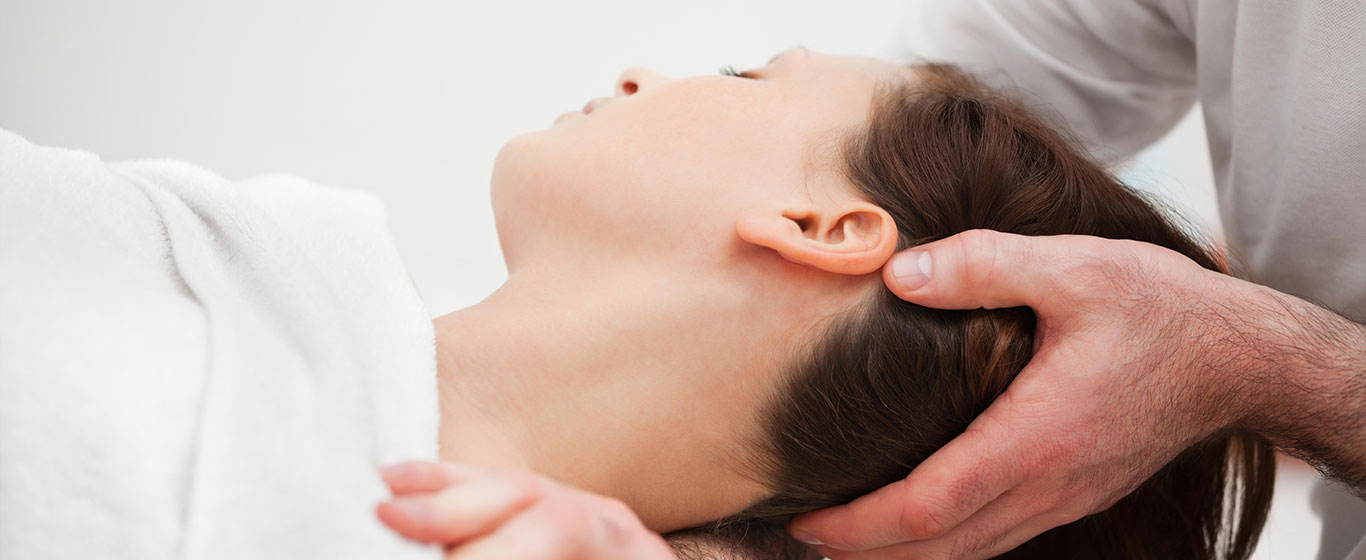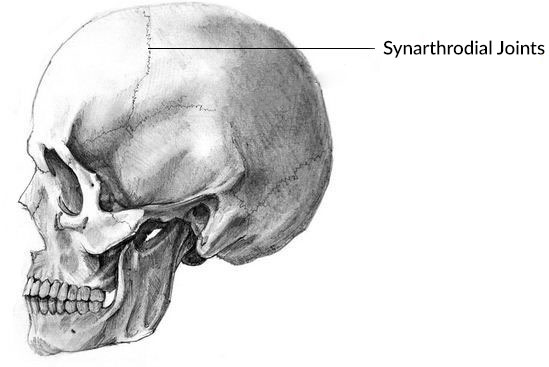Craniosacral Therapy

Everything About Craniosacral Therapy
Modern lifestyle is best experienced through best-in-class facilities and services. At the same time, it has been a host to a number of uninvited guests, i.e. stress, anxiety, tensions.
Increasing pressure from different walks of life poses huge threat to its quality. Undoubtedly, we are earning more than our ancestors but they surely lived a happier life than us.
What can be the best explanation to the above situation? It is stress, tension and mental pressure, all of which affect our brains 24*7. As we are in constant action, our body and mind wears out. We feel tightened muscles causing frequent cramps, fatigue and stressed. This in turn affects healthy living.
There are many ways to get rid of continuous stress and tensions. While some enroll in yoga classes, others go for long walks in early morning. However, the best way to deal with such condition is by involving science.
Till date, scientific therapies have been the best cure for all ailments and disorders. Such treatments work from within and deliver results in less time.
Craniosacral therapy is one such concept, using which people have become better stress managers.
In this article, we shall discuss more about this therapy including its roots, suitable conditions, the entire working mechanism, advantages and side-effects.
Craniosacral Balancing: Introduction
What is Craniosacral Therapy?
It is a unique and alternative form of treatment where therapists gently massage on the synarthrodial joints of the cranium part of skull.

Spinal cord, sacrum (triangular-shaped bone in the lower back portion of body) and head are the targeted areas of this procedure. While enabling people to overcome excess anxiety and stress, Craniosacral therapy treats other abnormalities efficiently.
Overall, it is a comprehensive hands-on approach that reduces mental pressure and physical pain simultaneously.
History of Craniosacral Therapy
The concept of Craniosacral therapy emerged from Osteopathic system of medication in the 19th century. A lot of credit goes to Andrew Taylor Still, the man behind this revolutionary discovery.
In fact, Osteopathic medicine was propounded by him. It was William G. Sutherland, who further developed this system into Cranial Osteopathy. However, the world had to wait till 1950s for getting its final shape, which was given by Harold Magoun.
In the 1960s, John Upledger shouldered the responsibility of teaching cranial work to non-osteopaths (one of them was Harold Magoun). The term "Craniosacral" was given by them. Slowly and gradually, it developed into a prominent treatment, capable of healing human mind and body.
Over the years, the therapy has further been influenced by immense research, new findings and technology. Today, it has become a professional discipline having huge career prospects around the globe. Both patients and practitioners are increasingly showing their interest in this wonderful mechanism. It is expected to further enhance its scope and influence the lives the other people across the corners of the world.
How does Craniosacral Therapy Work?
Balancing by Sandeep Bhasin
How is Craniosacral Therapy done? (Step-3 Parietal Lift)
How is Craniosacral Therapy done? (Step-4 Temporal Release)
Dural Tube Overview by Sandeep Bhasin
Before getting into the procedure, let’s develop some clarity on the Central Nervous system and the Craniosacral system along with the problem that gets cured through this therapy.
The Central Nervous system includes the brain and the spinal cord. Craniosacral system comprises a network of fluids and membranes surrounding them. Its primary function is to protect and maintain these two vital organs of Central Nervous system.
When we work every day, our mind and body tend to accumulate stress. It slowly builds up with time, leading to tightening of tissues. This further brings disturbances in the Craniosacral system.
Mounting stress and anxiety exerts more pressure on the brain and spinal cord, restricting the smooth functioning of the entire nervous system. Moreover, hardened tissues, contracted muscles intensify the blockage; thereby disrupting the normal interaction between these two systems and the whole body.
In such a circumstance, Craniosacral therapists apply a soft touch in different locations, i.e. neck, back and head. Using their hands, they try to sense an ease of motion as well as a proper rhythm of cerebrospinal fluid that runs around the spinal cord and brain. By means of the gentle touch, they help the body to get rid of those restrictions or blockages in the tissues.
This process goes on until all the tissues across these locations are loosened and back to its original form. Releasing the blocks is directly related to reduction of stress and tensions from the brain and spinal cord. The bones also relax and retain their power and strength. This is followed by regaining of mental strength and one starts feeling lighter and stress-free.
What Conditions does Craniosacral Therapy Address?
Be a successful Craniosacral Therapist
Besides regular tension and dilemmas, the therapy works wonders on multiple conditions like:
- Orthopedic Disorders
- Disorders in Central Nervous System especially those related to stress and tension
- Brain Traumas and Allied Injuries in Spinal Cord
- Post-Traumatic Stress Problems
- Headaches & Migraines
- Learning woes along with other problems among children
- Motor-Coordination Impairments
- Acute Fatigue
- Scoliosis & TMJ Syndrome
- Fibromyalgia
- Attention Deficit Disorder (ADD) & Attention Deficit Hyperactivity (ADHD)
Any other related problem can also be cured through this technique.
How many Craniosacral Therapy Sessions do I need?
In this context, this therapy is quite similar to any psychiatric treatment or counseling. In other words, there isn’t any fixed tenure for every person. All individuals are different and so are their stress levels.
Physical immunity, ability to heal mentally also varies and together with other similar factors determines the number of sessions for complete healing. Further, a person may also suffer from multiple disorders. In this case, he/she will need to go for more sessions.
It is suggested that you first attend a counseling session and share all your problems. The Craniosacral practitioner will assess your problems and then commit a probable tenure or number of sessions you need to attend.
Is there any condition where Craniosacral Therapy shouldn't be applied?
Yes, conditions like pre-existing acute bleeding problems, acute aneurysm and cerebral hemorrhage are not suitable for Craniosacral therapy. In such conditions, small variations or even a slight increase in intracranial pressure can result in instability. Hence, it is best to look for other options.
During your first consultation, talk about such issues (if any) and also try to know if you are prone to any other condition which may not be cured through this therapy.
Can I take Craniosacral Therapy courses without being a healthcare professional?
Be a successful Craniosacral Therapist
Sorry, you can’t. Most institutions in India conduct this course for healthcare professionals only. In fact, this is their only criterion for providing adequate training and knowledge about Craniosacral therapy. The picture is same even outside India.
You need to possess a license to touch in order to practice it professionally. Besides, this therapy demands appropriate knowledge of human body, location of pressure points and conditions suitable and unsuitable for the treatment. So, only healthcare professionals are learned enough to understand this treatment inside out.
Benefits & Uses of Craniosacral Therapy
The array of benefits is as follows:
- Eliminates compression and restrictions in neck, back and head
- Relieve pain by taking out stress, tensions and anxiety
- Heals physical, mental as well as emotional problems associated with stress
- Enhances satisfaction levels besides making people feel strong and steady
- Helps in restoration of cranial mobility
- Averts risks and dangers, which may arise from prolonged anxiety and trauma
- Brings more quality to life and improves health parameters
Moving on to the uses, the therapy produces excellent results in the following cases:
- Irritable Bowel Syndrome (IBS) & Constipation
- Frequent Migraines and Headaches
- Sinus Infections and Sinus-specific Problems
- Insomnia (difficulty in sleeping) or Disturbed Sleep Cycles
- Pain in joints of neck, head and back
- Re-appearance of ear infections or Colic (in infants)
- Recover from trauma
- Frequent Mood Swings & Disorders
- Depressions
- Complexions during Pregnancy
Side-effects & Risks associated with Craniosacral Therapy
Soon after treatment, patients feel uncomfortable. However, this is quite normal and temporary in nature. Generally, it goes away within 24 hours of therapy. Some other side-effects are dizziness, nausea, heavy sensations in the head and lastly, lower back pain.
If you ever fall prey to any of them, always bring it to the notice of the practitioner. They are the best people to guide you towards steady and complete healing.
An interesting aspect of Craniosacral therapy is that it is devoid of risks, meaning, it does not create new problems of its own or show abnormal signs in suitable candidates.
However, if those unsuitable for this therapy opt for it, it can turn out to be risky. Problems like acute bleeding, diagnosed aneurysm and fractures or bleeding in skull shall be inevitable. Also, people with a long history of traumatic injuries in head must refrain from this therapy.
Conclusion
By now, the potential of Craniosacral therapy is well known. Cutting across age, gender, demography and geographies, it has produced commendable results in almost all cases. From 6 to 60s, children to seniors; everyone consider it to be highly credible and effective. To many, it has been the oxygen for survival. At the same time, it is cost-efficient. Although it does cause discomfort at minimal levels, the long-term benefits are worthwhile.
More Information
Pay us a visit
Locate our office
E-34, Block E, Kalkaji, New Delhi-110019
CALL NOW:
+91-9667988499
+91-11-42420071
